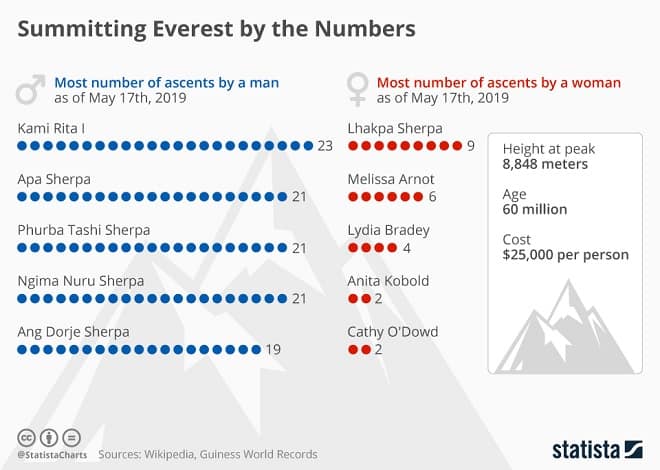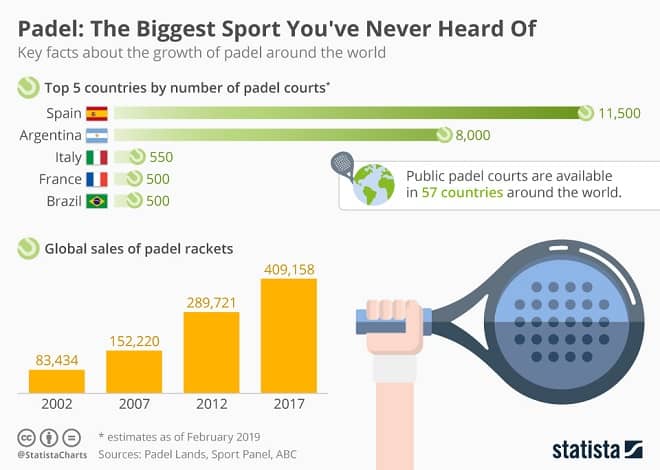Source: Statista
Have you ever heard of Fernando Belasteguín, Paquito Navarro or Maxi Sánchez? Well, neither have 99.99 percent of the world’s population. But what if I told you that to millions of people in Spain, Argentina and other parts of Europe and Latin America these guys are like Roger Federer, Cristiano Ronaldo or Lebron James? These three, along with some others, are the best of the best in what is often described as the fastest-growing sport in the world and what may very well be the biggest sport you’ve never heard of: padel.
Zlatan Ibrahimović loves it, Jürgen Klopp refers to it as “the best sport of his life” and Andy Murray recently invested in a company advocating the game in the UK. Coincidentally conceived in Mexico in the 1960s, when a guy named Enrique Corcuera added a back wall to a fronton court in his backyard, padel is a unique mix of tennis and squash, played on a 10 by 20-meter court enclosed by glass walls and metal fencing. Normally played in doubles, padel is less physically demanding than tennis, much easier to pick up but just as difficult to master. Thanks to the glass walls and fences surrounding the court, the ball rarely goes out of play, creating longer rallies and making it harder to finish off points with brute force.
As the following chart shows, Spain and Argentina are at the forefront of the padel revolution, with thousands of courts available to players in both countries. However, in recent years, the sport has grown beyond the borders of its “homelands” and spread rapidly to other countries. The number of rackets sold worldwide grew roughly fivefold between 2002 and 2017, and with new courts popping up left and right in countries like the Netherlands, Sweden and France, that growth will likely continue going forward. In case you want to find out more about the sport, the International Padel Federation’s website is as good a place to start as any.



